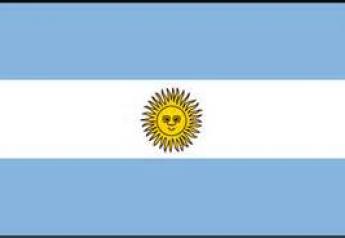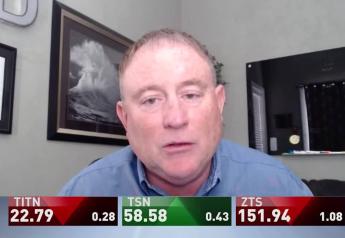Nebraska Wheat Yields in Question with Spring Weather Challenges
Nebraska Winter Wheat 070122
With the hot dry weather the winter wheat is turning quickly in Nebraska and harvest will soon be in full gear. However, those conditions have also had a negative impact on the outlook for this year’s wheat production.
Wheat farmers in western Nebraska are going on their third year of abnormally dry to drought conditions, including in the southwest. Rod Cappel, Farms near McCook, Nebraska, “It’s been super dry at my home which is just straight north of McCook I’ve probably only got about two maybe two and a half inches since the first of the year total.”
Tracy Zink says they’ve faced adversity with the wheat crop due to hail and late frost, plus the moisture deficit they’ve been running since last fall when they planted the crop. "We didn’t have any snow and so we started next to nothing. We’ve missed all the good rains and when we get a rain its 3 inch hailstone that are coming with it so. A lot of folks have replanted two or three times to our west."
USDA rated only 21% of Nebraska’s wheat crop in good to excellent condition in the latest report, with 34% poor to very poor, and conditions have been deteriorating all spring.
Cappel says, “It’s really varying, the wheat around here. Some of the fields are hurt pretty bad and other fields are looking pretty decent. It’s pretty much how it was taken care of last summer or if they are continuous wheat or ran a crop last summer and then drilled wheat that’s pretty tough looking."
Surprisingly Cappel doesn’t think his crop will be a disaster. In fact, his dryland wheat may not be that far off his 75 bushel per acre average or APH. “On our farm its gonna average about 60. Just looking around and stuff I would guess the county average would be around 60.”
However, the last two years farmers in the area have seen higher yields, so the crop will be down. Zink’s APH is right around 50 so she too is trying remain positive. If we could catch a small rain right now we have a chance of seeing some yields depending, of 60 to 70 and last year we had 80 to 90 it was all about the rain and the timing.”
However, time is running out as the combines will be rolling through the area any day.
Both Zink and Cappel run mostly dryland wheat, but say the irrigated fields look like they will have average to above average yields.







